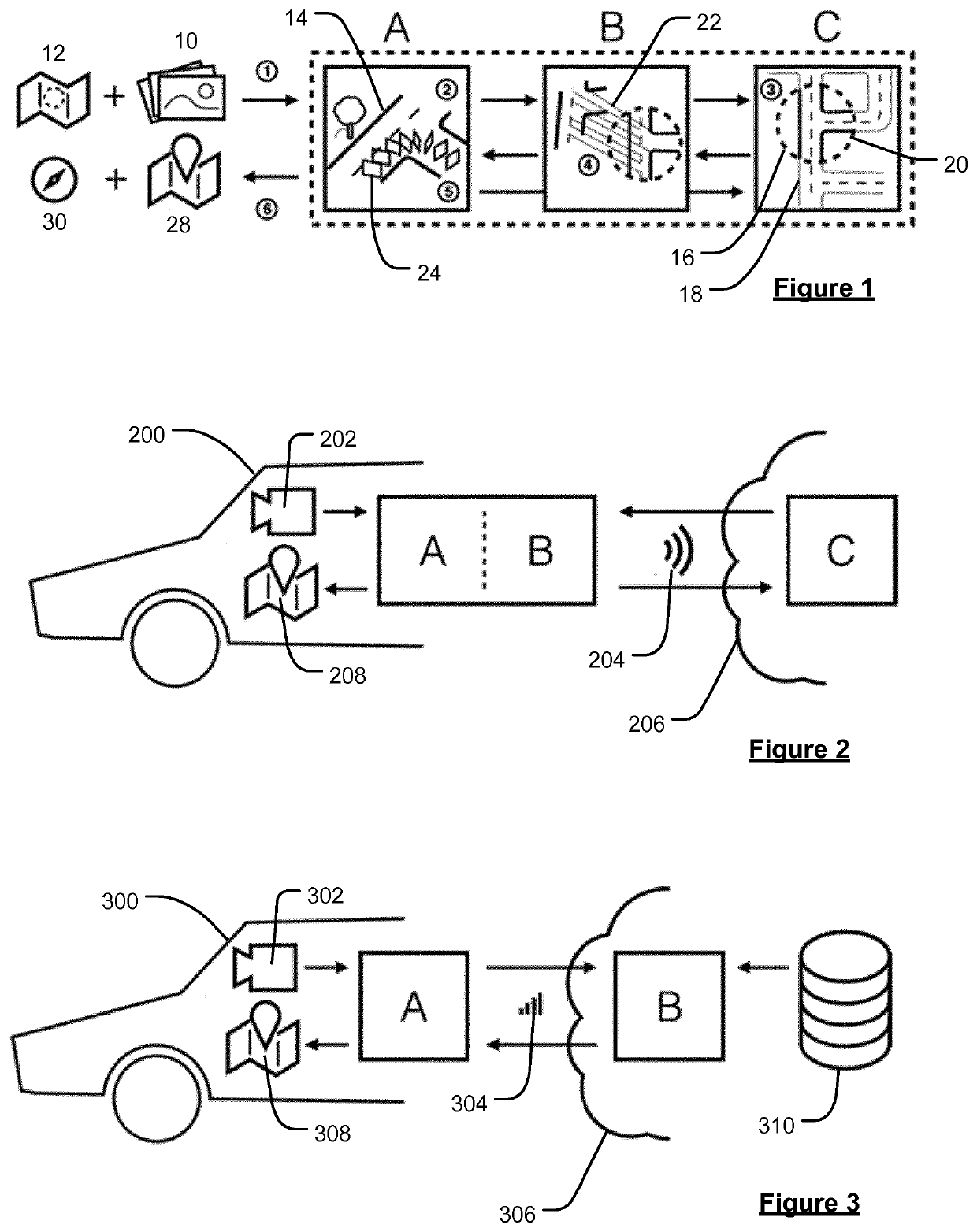Method and System for Video-Based Positioning and Mapping
- Summary
- Abstract
- Description
- Claims
- Application Information
AI Technical Summary
Benefits of technology
Problems solved by technology
Method used
Image
Examples
Embodiment Construction
[0154]The present disclosure generally relates to providing improved technologies for determining a geographical location and orientation of an observer (vehicle), e.g. within a road network that is covered by a pre-built map. In embodiments, the present disclosure thus relates to techniques for Large-Scale Visual Geo-Localisation and Mapping, as will be explained below. The localisation techniques of the present disclosure may for instance be used to facilitate various autonomous driving functionality or to supplement or generate improved electronic maps, e.g. for use with autonomous driving. For instance, as explained above, autonomous driving typically requires the use of a map that provides at least information regarding the lane geometry in the locality of the vehicle, e.g. the lane centre lines and lane connectivity (rather than just the road centre lines, as may be provided in a standard digital map, e.g. for use by standard portable navigation devices, e.g. for use by non-au...
PUM
 Login to View More
Login to View More Abstract
Description
Claims
Application Information
 Login to View More
Login to View More - R&D
- Intellectual Property
- Life Sciences
- Materials
- Tech Scout
- Unparalleled Data Quality
- Higher Quality Content
- 60% Fewer Hallucinations
Browse by: Latest US Patents, China's latest patents, Technical Efficacy Thesaurus, Application Domain, Technology Topic, Popular Technical Reports.
© 2025 PatSnap. All rights reserved.Legal|Privacy policy|Modern Slavery Act Transparency Statement|Sitemap|About US| Contact US: help@patsnap.com



